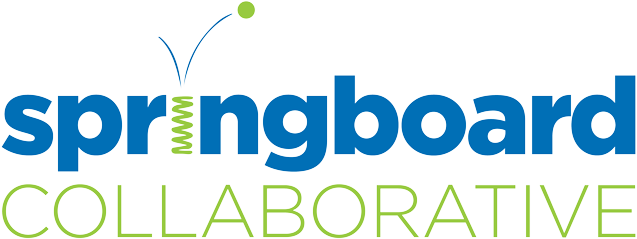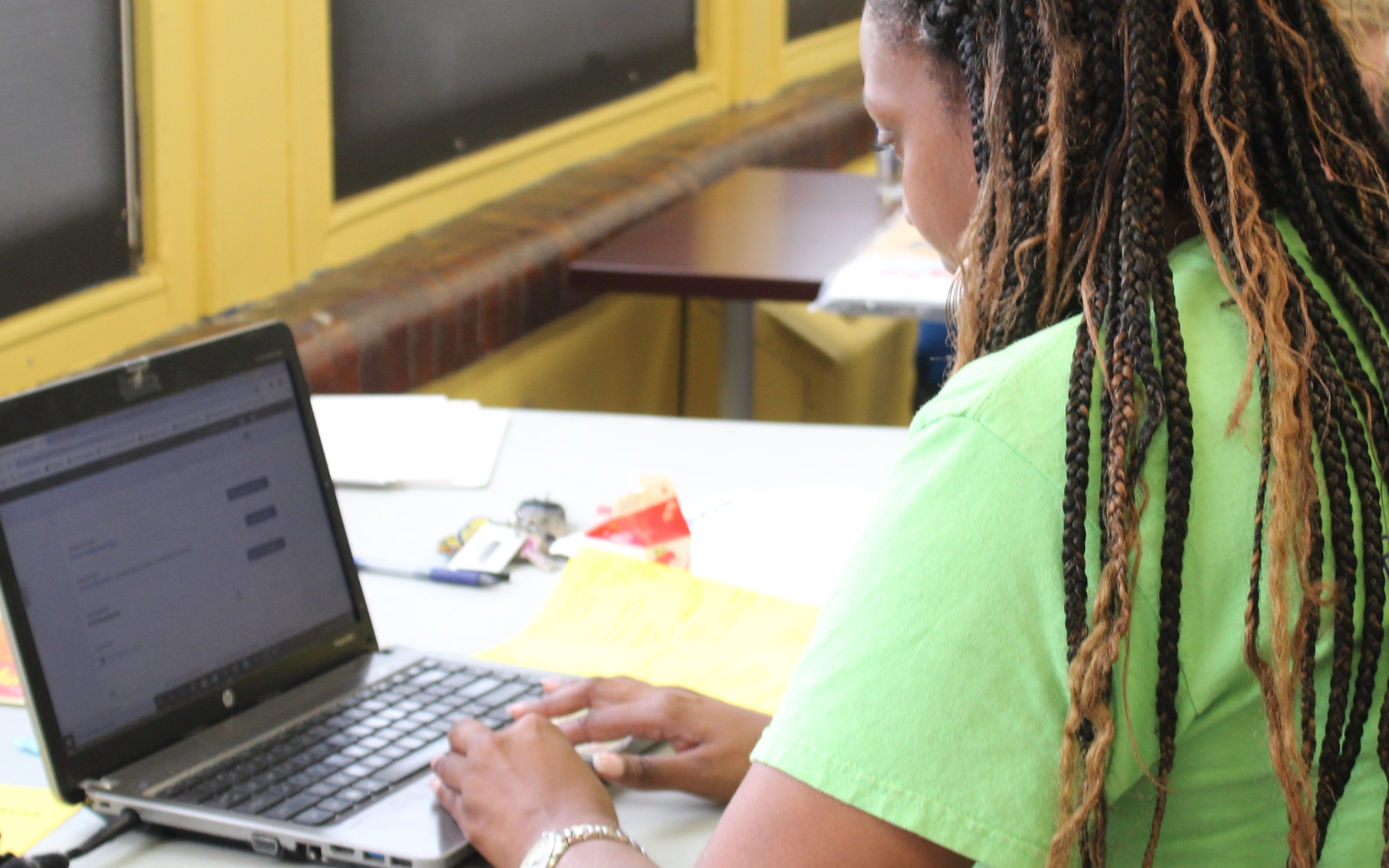As an educator and Springboard Collaborative partner, family engagement has always been a passion of mine. I’m constantly on a mission to think of new, proactive strategies to continuously improve family engagement. If the virtual setting has taught me anything, it is absolute certain proof of Springboard’s beliefs and values. We believe that families and teachers are the real superheroes, and the partnership between them creates the ultimate teaching superpower.
When given the opportunity to engage with their child’s learning, family members are eager and willing to do whatever they can to support their child!
The virtual setting has opened up the door to unlimited possibilities of engagement as learning (literally) transcends the classroom and happens in the homes of our students and families.
The important question now is not how to improve the quantity of family engagement but how to promote healthy engagement during live instruction. I’ll be the first to admit that I frequently catch myself “helicopter-ing” by my stepdaughter as she meets with her kinder class. If you’re a teacher, you’ve seen it, and if you’re a parent, you may have done it! Motivational nudges or comments from behind the scenes, accidently sliding a nose into the camera as you lean over their shoulders, and even the occasional unmute to address the teacher yourself.
Ultimately, we’ve always wanted families involved, so how can we be more intentional with how we engage our families in the virtual setting?
Daily community (or morning) meetings
Community meetings, aka morning meetings, have been prioritized during this time of much needed relationship building and healing together. If you are holding them every day, why not invite your family members to join in every now and then? This invitation will empower them, and help increase quality family engagement time.
In order to have an effective community meeting, we recommend the following four parts be present in your agenda.
1) Greeting: provide a sense of belonging by making sure everyone gets greeted by name.
2) Share out: offer a guiding question or topic to help build relationships and strengthen communication.
3) Activity: reinforce learning and encourage cooperation and inclusion through an activity.
4) Announcements and news: keep everyone informed and spark a little interest for the day.
Other types of community meetings
There are two additional types of community meetings that incorporate family members. The first is a family members/parent-only community meeting, which could be held four to six times a year. After this type of meeting, family members should walk away feeling grateful for the safe space you’ve created for them to exchange shared experiences, form new relationships, and learn from one another.
The other community meeting is an invitation for the family member of your student to partner up with their child during a scheduled community meeting weekly or biweekly. This approach has the potential for many positive outcomes because students and adults engage with each other, their peers, and you at the same time. Most importantly, families can also get the opportunity to engage with their child’s learning when the activity is centered around teaching and learning- it will almost feel like an extension of Springboard’s family workshop. For a full meeting, expect to take about 40-45 minutes. While best practice is to give every participant an opportunity to speak during the share, this can be time consuming with large groups. It is okay to use the chat box, and only have a few volunteers share out. Eventually meetings will find their flow and you’ll have more time to spare!
Community meetings are meant to be proactive, build community, and offer consistent check-ins. To get you started, I’ve shared a list below with enough greetings, share-outs, and activity ideas to get you through the entire year!
It is time for the real superheroes to unite—and a community meeting is the perfect place to join forces for students and children everywhere.
Adult family/parents only:
Suggested Frequency: Once a month
Greeting: List of Greeting Ideas
Activities:
1) Virtual scavenger hunt: Make it funny or competitive! Create a list of items that would be easily accessible and fits in a category (quarantine objects, virtual learning objects, etc.)
2) Show and tell: Provide a topic to help them narrow it down and make it meaningful.
3) Kahoot (or other virtual games): Pick a game you’ve played in class with your students, and challenge them to play with their child later that week! Remember to ensure everyone has access.
4) Reteach a skill you have taught in class and have family member(s) try it out: Common Core Math…need I say more? They’ll find humour and challenge and feel more confident working with their child.
5) TikTok challenge: Present a simple dance/TikTok challenge and invite them to repeat it! (No help from the kids allowed!)
6) Yoga poses/meditation/breathing exercises: Grab a short video from GoNoodle, Headspace, or YouTube and do it together.
7) Share a hidden talent: You’ll learn about the adults in your classroom community, and how their hidden talents might help you in the classroom!
8) Draw a picture of your child: It doesn’t have to be good! The purpose is to take time to reflect on how they picture their child and what characteristics really stand out to them.
9) Share your favorite photo, mug, etc: Sometimes we forget how the simplest objects in our lives hold so much personal meaning.
10) Watch a video clip or read an excerpt together: Connect this to current events, school policy, themes or units, or simply a favorite author or movie. As time goes by, you could ask a volunteer to submit their own for the activity.
Share Topics:
1) What are your dreams and goals for your child?
2) What is your favorite/least favorite memory of school?
3) If you could give a child one piece of advice, what would it be?
4) What has best helped your routine during virtual learning?
5) What is your biggest fear?
6) What makes you proud?
7) What do you value?
8) What is something that is important to you during your child’s virtual learning experience?
9) What is one thing you need during your child’s virtual learning experience?
10) What is one thing you’d like to celebrate about your child’s classroom, and one thing you’d like to recommend?
11) What is one thing you wish someone had told you when you were a child?
12) What is one thing you wish you had more time to do?
13) Imagine your child as an adult RIGHT NOW. What would they be doing/what kind of career or job would they have?
14) What is one thing your child does/says that makes you laugh and/or get you mad every time?
15) What is one thing you’d change about the world?
Adult family member/parents and students:
Suggested Frequency: Once a week or once a month
Greeting: List of Greeting Ideas
Activities:
1) Re-teach a skill you have been working on with your students, and have family member(s) and child practice together: Imagine this like a Springboard family workshop. We model the strategy, and then let them partner up to practice together. Before practice time, make sure they have access to the platforms needed!
2) Draw a picture of each other: The purpose is not about quality, but for adult and child to see how they are reflected in each other’s eyes.
3) TikTok Challenge: Have them partner up to remake a simple challenge.
4) Show and tell: Adult and child can each bring an item, or choose one item together. They will discover interests and meaningfulness in items selected.
5) Kahoot (or other virtual games): Adults vs kids, partnered up, or every human for themselves! When the adult’s inner-kid gets to come out, it makes everyone smile.
Share topics:
1) What is your favorite book to read together?
2) What is one thing you wish you had more time to do together?
3) What is your favorite activity to do together?
4) What subject do you spend the most time practicing together?
5) What is one thing you love about each other?
6) What is/was your favorite thing to do in school?
7) What is/was your least favorite thing to do in school?
8) If you could be anything you wanted, what would you be?
9) If you found a suitcase with one million dollars on the sidewalk, what would you do?
10) What is one thing you like about virtual school? One thing you dislike?
11) Tell us something about yourself you wish people knew.
12) Tell us one boring fact about yourself.
13) What is something that helps you calm down?
14) What is one thing that makes you really proud?
15) What is your biggest fear?
16) What are your hopes and dreams for yourself and/or one another?
17) If you could be any animal, what would you be and why?
18) What is one thing you’d change about the world?

